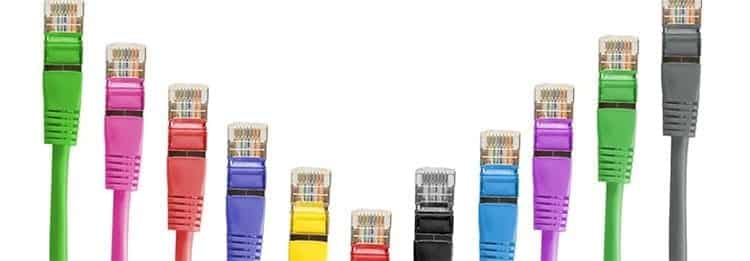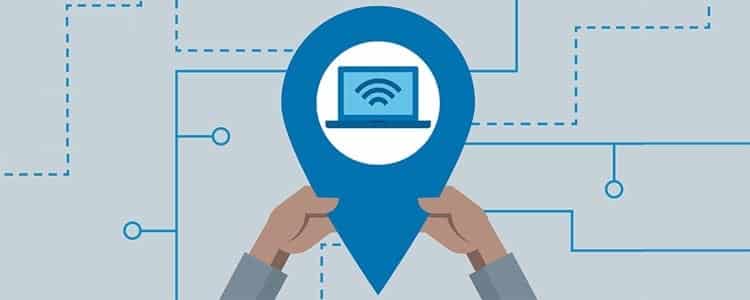We were recently talking about What is Ethernet and what is it for?, and now that you know better what the thing is about, what we are going to do is explain Which Ethernet network cable should I use based on my needs?.

Article Content
Why are there different Ethernet cables
First of all, it is important that you keep in mind that, as much as Ethernet cables are similar to the telephone cables that are in every home, they actually have quite a few differences between them. In this way, to connect several devices or peripherals through an Ethernet network, it is essential to use Ethernet cables, which have been specifically designed for these uses.
Basically, these cables will be responsible for passing data between equipment and devices, guaranteeing that there will be no interference, which is why it is still a better option than wireless connections, in addition to the fact that we will be able to achieve greater connection distances and guarantee the maximum transfer speed.
Basically there are different Ethernet cables since, depending on the category we choose, we will have certain characteristics such as transmission speed, bandwidth and interference.
Transmission speed is the time it takes to transfer information from point A to point B, which is measured in MB/s or GB/s. As for bandwidth, it refers to the efficiency when transferring information and is measured in MHz, with a higher frequency offering more effective transmission.
And finally we have interference, which is the disturbance in communication, and is due to the electromagnetic field that is formed when there are several cables together, which can cause information to be lost during transmission or even cause there to be insufficient reliability in the data transferred. . This aspect improves, like the previous ones, the higher the category.
As you can see, these are three very important pieces of information that we must take into account when choosing which Ethernet cable is most appropriate in our case.
Types of Ethernet cable depending on category

Category 1 Ethernet Cable
It is the simplest of all and is based on a braided telephone wire that is designed for voice transmission but not for data transmission. Allows transmissions higher than 1 MHz.
Category 2 Ethernet Cable
In this case we are talking about a unshielded stranded cable, designed for frequencies above 4 MHz.
Category 3 Ethernet Cable
We already talked about the first valid connection for Ethernet which is also the most common because until recently it was the one that met all the needs based on the maximum connection that could be achieved, since it allows 10 MB/s, managing to exceed the frequency of 16 MHz.
Category 4 Ethernet Cable
We move on to Category 4, which allows connections of up to 20 MB/s as well as frequencies greater than 20 MHz.

Category 5 Ethernet Cable
Within Category 5 we have five different cable models, but basically we are going to focus on Category 5E, which would be the highest and would allow us to transmit data up to 100 MB/s and frequencies higher than 100 MHz.
Category 6 Ethernet Cable
In this case we find a considerable improvement, managing to reach up to 1 GB/s, or what is the same, 1000 MB/s, being able to reach frequencies higher than 250 MHz.
Category 7 Ethernet Cable
And finally we have Category 7 which is the highest of all and allows up to 10 GB/s as well as the ability to exceed the frequency of 600 MHz.
It is important that you keep in mind that currently the trend is to use cables from Category 5E for Ethernet, so that also It is important that you take into account everything from the internet connection you have to the Network Switch, that is, the connector through which all the equipment, peripherals and Internet connection are joined, since depending on the maximum speeds it will be worth using a cable or a different one.
That is, if our Switch allows up to 100 MB/s, it is absurd to buy category 6 and 7 Ethernet cables, since we are not going to take advantage of it; Even if our internet connection is fiber, in any case we will not exceed 100 MB/s, so we will have a bottleneck that will prevent us from reaching the maximum speed that the connection allows us.
For this reason, it is advisable to buy a higher Network Switch model that at least allows 1 GB/s (10M/100M/1000M), thanks to which you will not only take advantage of the entire internet connection, but you will also improve communication. between the teams. Of course, in this case we already have to think about a Category 6 cable.
At the moment, connections of more than 1000 MB/s are not common in home or small office networks, which is why Category 7 is something that we can purchase but rather thinking about the future, since it will work exactly for us. same as a Category 6.
Industrial Engineering student and lover of writing and technology, for several years I have participated in various pages with the aim of always keeping myself informed of the latest trends and contributing my grain of sand in this immense dissemination network that we know as the Internet.




